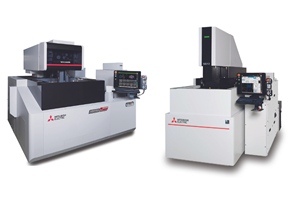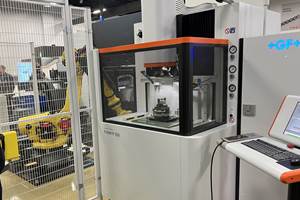Installing That First EDM
This shop did it right. Their experiences provide useful guidelines for successfully installing a wire machine in a shop new to EDM.
Share








ECi Software Solutions, Inc.
Featured Content
View More
Autodesk, Inc.
Featured Content
View MoreLiving up to the name is a challenge. Optimum Precision Machine Inc. is what it's called. This small shop in Connersville, Indiana, recently installed its first wire EDM (electrical discharge machine). The smooth startup of wire operations has helped the company continue to meet the challenge built into its name. That smooth startup was no accident. Basically, it represented a commitment to doing it properly, planning carefully, learning and following some sound procedures, and executing efficiently.
Any shop considering the acquisition of its first EDM will find some valuable lessons here. Although OPM's new machine is a wire unit, much of what they did applies to a ram EDM as well.
Installing an EDM is not like bringing in another vertical machining center or another CNC lathe. The EDM process requires some special considerations. None of these are terribly complicated or expensive, but neglected or ignored, they could jeopardize the success of the installation. And taking notice of these matters calls attention to the unique characteristics of EDM.
The Decision To Buy
OPM is truly a family-run business. The father and son team of Mike and Chris Frank started the business about five years ago. Their wives handle the bookkeeping and paperwork associated with front-office affairs. Four other employees round out the shop roster.
There's a surprising number of small job shops and tool-and-die houses in or around Connersville, a town of 16,000 located in south central Indiana, midway between Indianapolis and Cincinnati. And that means there is enough competition in the area to keep shops on a constant lookout for new and improved technology.
Mrs. Frank (that would be Penelope, Mike's wife) is the one who persistently pointed out that the shop's spending for wire EDM services had grown to the point that they probably exceeded a monthly payment on a new wire machine. Buying their own machine had become a real possibility.
Actually, it had become a real necessity. Regardless of the economics, Mike and Chris Frank recognized that relying on subcontractors put them at a disadvantage because OPM's turnaround time on jobs often hinged on the responsiveness of the shops doing wire EDM for them. Being at the mercy of some other shop's production scheduling didn't put them in the best position to serve their own customers in a timely and dependable fashion.
These customers include a large automotive plant that frequently turns to OPM for gage fixturing installed on its production lines, and several large stamping firms in the region that have OPM build progressive dies for them. The workpiece materials are usually die steels but also include aluminum.
But matching other shops in the area was not the only goal—the Franks saw an opportunity to take a step ahead. They were looking at the ultra high precision that wire EDM is capable of—precision to the "tenth." This capability would attract a new class of customers with the sort of challenging and profitable work that a small shop like this thrives on.
Worth noting is that Chris Frank and one of his operators, Andy Keller, have extensive experience with wire EDM from stints at other shops, giving them the confidence to proceed promptly with the acquisition.
Finding The Machine
With this strategy in mind, the Franks established four priorities for a wire EDM. Top ranked, of course, was precision, the ability to hold at least 0.0002 inch on a routine basis.
Next priority was surface finish. The ability to achieve fine workpiece finishes with a minimum of grinding or polishing would yield a savings in reduced production time. The shop, for example, manufactures V-blocks in a variety of sizes, all requiring at least a 16 Ra finish.
Third up was wire cutting speed. They figured that at least 22 to 24 square inches per hour would be required to keep up with the workload they projected for the machine, plus create some additional capacity to sell to other shops. (In wire EDM, cutting speeds are usually derived from a theoretical application in a 2-inch thickness of D2 die steel with no taper or contouring.)
Finally, they wanted enough automation to run a third shift unattended. The chief feature in this regard is a reliable wire rethreader.
Beyond these criteria, the shop did not pay much attention to comparisons.
"We didn't want to be distracted by inessentials or frills. We wanted to keep this whole thing clear and simple," Mike Frank recalls.
The equipment search was straightforward and brief, based largely on a review of brochures and product literature and a couple of trips to distributors in the area. OPM opted to buy an Agiecut Classic from AGIE Ltd. (Davidson, North Carolina) through GIS Inc., a machine tool distributor in Fort Wayne.
This model, introduced in the United States about a year ago, is one of AGIE's newest wire machines. The builder claims a top cutting speed of up to 28 square inches per hour, with accuracies in the 0.0002 inch range. This model offers 30 degrees of taper cutting in workpieces up to 100 cm (3.9 inches) high, along with other features for automated operation. Mr. Frank, however, keeps it clear and simple: "We bought this machine for its accuracy and finish."
The machine was ordered last August and delivery was scheduled for the following month, making it the first Agiecut Classic in this part of the state.
Preparing The Shop
The most conspicuous change to OPM's shop area is the enclosed workspace built for the new wire machine. Less visible, but equally important, are modifications to electrical wiring, plumbing, air lines, and air conditioning.
According to Mike Frank, the distributor played a key role in helping them determine exactly what changes needed to be made. Following these specifications and suggestions took much of the guesswork out of preparation. In fact, much of the work Mr. Frank and his son did themselves. They built the walls for the new "EDM room," for example, over a couple of weekends. Layout of the room, however, had been reviewed and approved by the distributor ahead of time.
But before walls could go up, the machine had to come in. Shipping arrangements were coordinated by the distributor. After a local rigger had the machine off the truck, the Franks used their own forklift truck to spot the machine inside the shop. Its exact location had already been marked on the floor.
The room itself measures 12 by 24 feet, with a 10-foot ceiling to which additional layers of insulation had been added. The main reason for the enclosed space is temperature control. Although the Agiecut Classic is a fully enclosed machine with on-board temperature controls of its own, no machine tool can overcome the effects of wide temperature swings inside a shop. At OPM, an ordinary room air conditioner provides the necessary cooling for the new EDM room.
"We knew going into this that we needed the enclosure," Mr. Frank explains. "We were committed to creating the best conditions for getting optimal performance of that machine. It's all based on our need for the ultra high accuracy of wire EDM."
The walls are simply 2 x 4 framing overlaid with drywall. The construction is neat and plain, but attractive. There is enough room inside to get around the machine easily for routine maintenance, but removing a wall to relocate the machine would not be difficult.
Pipes And Wires
Along with building the enclosure, modifying the shop's utilities was necessary.
Piping for cold water was extended to reach the dielectric system of the machine. A drain line also was installed.
Right alongside the water pipe is new piping to bring compressed air into the EDM enclosure.
A separate 220-volt electrical line was installed, with added circuit breaker boxes for the transformer and chiller. GIS, the machine tool distributor, recommended incorporating an electronic line conditioner. Power conditioning guards against irregularities in voltage such as momentary surges (spikes) or interruptions, and this protection is recommended for any machine tool equipped with electronic controls. Because wire EDM depends on the subtle control of electrical energy as an intrinsic part of the "spark erosion" process, any wire EDM can be vulnerable to irregularities in power line voltage.
Preparing The People
While AGIE's installation crew was setting up the machine in Connersville, Chris Frank and Andy Keller attended the builder's three-day training course to learn the intricacies of programming and operating the new wire machine. Ken Baeszler at AGIE stresses the importance of this training: "First-time users should take advantage of the wide range of training courses that EDM manufacturers offer to their customers. The investment of the days spent at the training facility will pay off many times over for the customers, because they will learn shortcuts that may take months to acquire on their own." It also provides an opportunity to interact and share experiences with other operators and managers, he adds.
"We made a considerable investment in the Mecanic programming system to go along with the new machine," notes Mr. Frank. "This system gives us powerful tools for developing wire cutting paths, but its chief value to us was the ability to quickly match machining parameters with the requirement of the job." This programming system, especially developed for wire EDM, is marketed by Mecasale USA Ltd. (Huntley, Illinois).
Having a programming system compatible with the machine is one point that Mr. Frank feels new shops need to take to heart. "It's the key to a machine's productivity. Skimping in this area is a mistake to be avoided."
Another distinction between programming for wire EDM and other types of CNC machine tools is this: Good code is only half the battle. Wire EDM programming is also a strategic issue. It is important to program the machine to reduce operator intervention or to have operator intervention at certain points. "We have found that your average CAM system doesn't have the software tools needed to get the most out of a wire EDM, even if it can handle generating the wire path," Mr. Frank observes.
Tooling And Accessories
In a word, order these with the machine tool. Most manufacturers offer tooling packages that can be ordered with the machine. OPM went with a kit offered by AGIE as a standard package for the Agiecut Classic. Tooling is stored in a dedicated toolchest stationed next to the workbench in the EDM room.
"Tooling for wire EDM is not inexpensive," Chris Frank warns. "We had everything we needed to get started, and we can add tooling items as we need them." On average, however, the builder says new users can expect to spend around ten percent of the total cost of a new wire machine on EDM tooling.
Of course, the "cutting tool" in EDM is an electrode that delivers the electrical discharges to the workpiece. In wire EDM, the electrode is typically a brass or alloy wire from 0.004 to 0.013 inch in diameter. In ram EDM, the electrode is a shaped piece of graphite, copper, or copper alloy. The point is, these cutting tools are not like any others used in machining.
OPM stocks a variety of wire types for different applications, but the shop has been pleasantly surprised to find that plain brass wire performs extremely well on the Agiecut.
"We are getting excellent finishes and fast cuts with plain brass," remarks Mr. Frank. "We were prepared to use a lot of the premium coated wires, which are three times as costly as the brass, but now it looks like we'll need those only rarely."
Because untended overnight operation is an essential part of OPM's plans for this machine, a large capacity wire spool becomes a necessity. OPM normally uses 35-pound spools for a greater degree of autonomy.
Now It's Your Turn
EDM isn't for every shop. Yet with more and more applications lending themselves to this versatile and economical process, more and more shops are finding it a have-to-have capability.
In the case of Optimum Precision Machine, high precision wire EDM was exactly right for them. And they worked hard to do everything exactly right to bring the machine in successfully.
Click here to learn more about supplier GF Machining Solutions LLC.
Related Content
MC Machinery EDM Offerings Provide Optimized Performance
MC Machinery’s Mitsubishi SG12 and MV2400 EDMs provide ergonomic and efficient operations.
Read MoreElectrical Discharge Machining in Ten Articles
This roundup of the top ten Electrical Discharge Machining articles on Modern Machine Shop covers the wide range of EDM topics.
Read MoreBelmont Small-Hole EDM Features Multitasking Capabilities
The SY-4060 provides automatic depth control, three-step control of EDM parameters and conversational G- and M-code programming.
Read MoreEDM, Laser Micromachining and More at GF Medical Demo Center
At GF’s Medical Center of Competence, the company shows off EDM and laser features that could make a large impact on medical manufacturing — and elsewhere.
Read MoreRead Next
Building Out a Foundation for Student Machinists
Autodesk and Haas have teamed up to produce an introductory course for students that covers the basics of CAD, CAM and CNC while providing them with a portfolio part.
Read More5 Rules of Thumb for Buying CNC Machine Tools
Use these tips to carefully plan your machine tool purchases and to avoid regretting your decision later.
Read MoreRegistration Now Open for the Precision Machining Technology Show (PMTS) 2025
The precision machining industry’s premier event returns to Cleveland, OH, April 1-3.
Read More













.png;maxWidth=150)












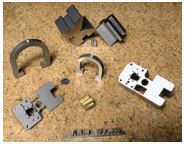

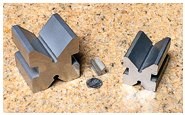
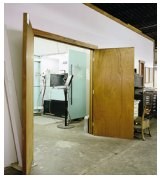
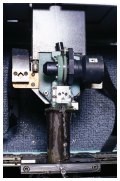







.jpg;maxWidth=300;quality=90)












